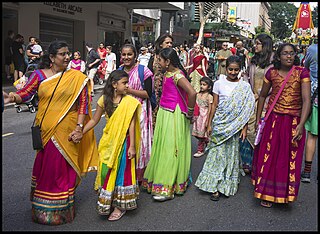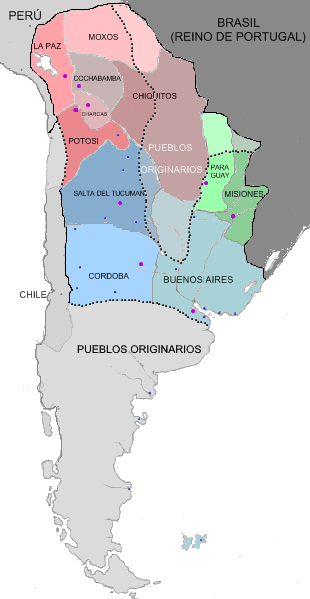| |||||
| Centuries: | |||||
|---|---|---|---|---|---|
| Decades: | |||||
| See also: | List of years in India Timeline of Indian history | ||||
Events in the year 1788 in India.
| |||||
| Centuries: | |||||
|---|---|---|---|---|---|
| Decades: | |||||
| See also: | List of years in India Timeline of Indian history | ||||
Events in the year 1788 in India.

The 18th century lasted from 1 January 1701 to 31 December 1800 (MDCCC). During the 18th century, elements of Enlightenment thinking culminated in the Atlantic Revolutions. Revolutions began to challenge the legitimacy of monarchical and aristocratic power structures. The Industrial Revolution began during mid-century, leading to radical changes in human society and the environment. The European colonization of the Americas and other parts of the world intensified and associated mass migrations of people grew in size as part of the Age of Sail. During the century, slave trading expanded across the shores of the Atlantic Ocean, while declining in Russia and China.

Lorient is a town (commune) and seaport in the Morbihan department of Brittany in western France.

The brown-headed barbet is an Asian barbet species native to the Indian subcontinent, where it inhabits tropical and subtropical moist broadleaf forests.

Sir Charles Wilkins was an English typographer and Orientalist, and founding member of the Asiatic Society. He is notable as the first translator of the Bhagavad Gita into English. He is also the first person to introduce the term Hinduism which would refer to all the different mythologies and cultures of which were existing in India as one. He supervised Panchanan Karmakar to create one of the first Bengali typefaces. In 1788, Wilkins was elected a member of the Royal Society.

Jharkhand Mukti Morcha is a political party in the Indian state of Jharkhand which was founded by Binod Bihari Mahato. Shibu Soren is the president of the JMM. JMM is also an influential political party in the state of Odisha and parts of neighbouring of states. Its election symbol for Jharkhand is Bow and Arrow.

John Meares was an English navigator, explorer, and maritime fur trader, best known for his role in the Nootka Crisis, which brought Britain and Spain to the brink of war.

EID Parry Limited is an Indian public company engaged in the manufacture and marketing of sugar and bio-products, headquartered in Chennai. EID Parry has been in business since 1788, making it the oldest surviving mercantile name in Chennai. It has many firsts to its credit, including the manufacturing of fertilizers (1906) for the first time in the Indian subcontinent.

Tirhut Division or Tirhut Commissionary is an administrative-geographical unit of Bihar in India. Muzaffarpur is the headquarters of the division. It comprises six districts: Muzaffarpur, West Champaran, East Champaran, Vaishali, Sitamarhi and Sheohar.

The Royal Audiencia of Santiago was an Audiencia Real or royal law court that functioned in Santiago de Chile during the Spanish colonial period. This body heard both civil and criminal cases. It was founded during the 17th century and abolished in 1817.
The 77th Regiment of Foot was a line regiment of the British Army, raised in 1787. Under the Childers Reforms it amalgamated with the 57th Regiment of Foot to form the Duke of Cambridge's Own in 1881.

The Nawab of Awadh or Nawab of Oudh was the title of the rulers of Kingdom of Awadh in northern India during the 18th and 19th centuries. The Nawabs of Awadh belonged to an Iranian dynasty of Sayyid origin from Nishapur, Iran. In 1724, Nawab Sa'adat Khan established the Kingdom of Awadh with their capital in Faizabad and Lucknow.

Indian Australians or Indo-Australians are Australians of Indian ancestry. This includes both those who are Australian by birth, and those born in India or elsewhere in the Indian diaspora. Indian Australians are one of the largest groups within the Indian diaspora, with 783,958 persons declaring Indian ancestry at the 2021 census, representing 3.1% of the Australian population. In 2019, the Australian Bureau of Statistics estimated that 721,050 Australian residents were born in India.

The military history of the United Kingdom covers the period from the creation of the united Kingdom of Great Britain, with the political union of England and Scotland in 1707, to the present day.

The Real Audiencia de Buenos Aires, were two audiencias, or highest courts, of the Spanish crown, which operated in Buenos Aires. The jurisdiction of the first covered the territory of the Governorate of the Río de la Plata and operated from 1661 to 1671. The second began to function in 1783 and had jurisdiction over the parts of the Viceroyalty of the Río de la Plata not covered by the Audiencia de Charcas, that is to say the intendancies of Buenos Aires, Córdoba del Tucumán, Salta del Tucumán and Paraguay. In 1810, after the May Revolution, it was suspended, and in 1813 the Assembly of the Year XIII permanently abolished it. The Audiencias operated in the city's cabildo building.

Maihar State was a princely state in India during the British Raj, located in what is today Madhya Pradesh, central India. The state had an area of 1,050 square kilometres (407 sq mi), and a population of 63,702 in 1901. The state, which was watered by the Tons River, consists mainly of alluvial soil covering sandstone, and is fertile except in the hilly district of the south. A large area was under forest, the produce of which provided a small export trade.

Bidar Bakht Mahmud Shah Bahadur, also known by his regnal name Jahan Shah, was the eighteenth Mughal emperor for a brief period in 1788 after Shah Alam II was deposed by Ghulam Kadir, Mahmud Shah Bahadur was the son of a former Mughal Emperor, Ahmad Shah Bahadur. He himself became emperor for a brief period in 1788 as a puppet of Ghulam Kadir, after Shah Alam II had been deposed and blinded. He was allegedly put to death in 1790 by order of Shah Alam II, supposedly for usurping his authority in 1788.

Palanpur State was a princely state of India during the British Raj. It was a Salute state with the Nawab of Palanpur having a hereditary salute of 13-guns. It was the main state of the Palanpur Agency. Palanpur State became a British protectorate in 1809/17; its capital was the city of Palanpur.
Jessop & Company Limited was an Indian Government owned engineering company based at Dum Dum, Kolkata, India. It was sold by Government of India to Ruia Group when Atal Bihari Vajpayee and Bharatiya Janta Party was in power. It is part of the Ruia Group of companies, which also owns prominent rubber & tyre companies like Dunlop India and Falcon Tyres.

Nadia Raj was a dynasty of Zamindars and the rulers of territories that are now part of the Nadia district region of West Bengal, India. Their seat was at the city of Krishnanagar, Nadia. The estate of Nadia Raj was estimated to cover an area of 8,161 square kilometres (3,151 sq mi).
Events in the year 1795 in India.